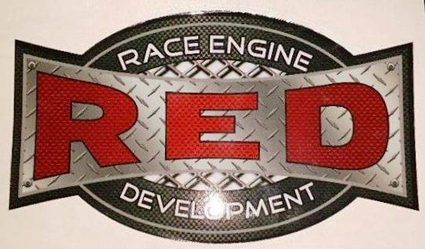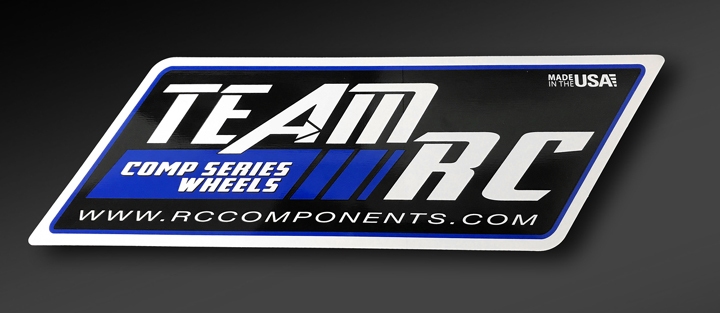Reading a blown alcohol tune-up using spark plugs is a very different than reading a gasoline tune-up on spark plugs. First major difference for alcohol is that you do not read the color off the porcelain around the center electrode. Air to fuel ratios within the combustion chamber are going to be read by the appearance of the metal base ring at the end of the threaded area of the plugs and the color of the first three threads of the spark plugs. The amount of ignition advance is still read as with gasoline plugs by the blue line on the plugs ground strap or sometimes referred to as the ground electrode.
An important note is that the spark plugs only reflect the tune-up that was in the motor just prior to finish line engine shutdown. In a ¼ mile this is normally just the last 300 feet in high gear but it takes 1000 feet to develop the correct appearance. It is possible for the plugs to indicate a good tune-up at this point but to have run too rich or too lean in first or second gear or at a lower rpm. This makes it possible to damage the engine due to incorrect fuel mixture in the first part of the run and actually be correct at the finish line. It is highly recommended that the initial tune-up runs be limited to 1/8th mile plug readings before proceeding on to the ¼ mile run. Most the damage to an engine is done in the last 300 feet.
The fuel mixture and the ignition timing are totally intertwined as to the effecting the appearance of the spark plug ring at the of the threads and the EGT values. Changing the fuel to air ratio and changing the ignition will both change the combustion chamber temperature. The leaner the mixture or the more advanced the ignition the higher the combustion chamber temperature and the richer the mixture or the more retarded the ignition the lower the combustion chamber temperature. Remember the EGT sensor is outside the combustion chamber so it is only reading the exhaust gas/flame temperature. The more the ignition advance the lower the EGT and more the ignition is retarded the higher the EGT. This opposite effect is caused moving the heat or the flame out of the chamber into the exhaust with a retarded ignition and raising the temperature of the EGT. So having a high EGT because of retarded ignition can and will show less heat in the spark plugs.
It is highly recommended to pick a maximum ignition timing point that is known to be good for your particular engine setup and tune the mixture for that point. This way the tune-up is safe and you can retard the ignition to pull out power without drastically changing your fuel tune-up. You can always go back to the maximum power ignition point without damaging the engine.
Reading For Air Fuel Mixture
An important step first is to degrease the plugs by spraying the threaded end with brake cleaner to remove any deposits of oil that may have been put on the plug during shutdown or when the plug was removed from the head. Most of the spark plug manufactures that make plugs used for racing plate the spark plug shell with cadmium or zinc which oxidizes at a temperatures that corresponds to the correct operating range of the temperatures within the combustion chamber of a racing engine.
As one is tuning the motor and leaning the fuel system out the first part of the plating to start oxidizing will be the ground strap. This oxidation (burning) is uneven in progression around the ring at the end of the threaded part of the plug because the side of the plug ring that was closest to the exhaust valve seat gets hotter faster than the side of the plug ring that is closest to the intake valve seat. The result is a crescent of unburned cadmium that gets smaller as the engine is leaned out. When the cadmium is oxidized and has turned white across the entire face of the plug ring or countersink area just inside the ring the increased temperature then progresses down the side of the plug into the threaded area.
The peak performance is at the point where the cadmium or zinc plating oxidizes and turns white over about 90% of the plug ring and a small crescent of unburned plating is left on the ring. Burning 100% of the plating off the ring all the way down to the first thread will not result in any damage but will also not result in any increase in engine performance. There is a fairly large tuning range between the burned area being at 90% and being burned all the way down to the first thread. Using this large area will ensure that no damage is done to the engine. The next stage from this safe appearance is when the cadmium is burned down to the second thread and the ring loses its white appearance and picks up a greenish tint with small visible bubbles and the ground strap picks up rainbow colors (blues and green when held in the bright sunlight). The strap getting hot enough to exhibit rainbow colors is hot enough to start igniting the fuel mixture too soon and causes pre-ignition/detonation. As the plug gets hotter then sooner the mixture will ignite and this will result in the melting of the ground strap and possible breaking of the plugs porcelain and damage to the upper rod bearings.
By keeping good records of actual performance this peak performance point should be readily seen and matched to the indication on the spark plug ring. When the 90% white ring is obtained with the fastest MPH noted you are now ready to move on to adjusting the ignition timing.
Reading for Ignition Timing
Once the fuel mixture has been adjusted so that 90% of the plug ring is white and all the cylinders have been adjusted so that the white area are the same on all plugs the ignition timing can be now checked by reading the blue line on the ground strap of the plug.
Ignition timing is also directly responsible for the heat in the combustion chamber and therefore the color of the plug's ground strap is a tattletale sign of this temperature because it is thinner than anything else on the plugs and sits right out in the combustion chamber. The ignition timing can be checked by looking at the color of the plug's ground strap and the position of the "blue line" on the strap. The blue line really indicates the point at which the strap has reached annealing temperature of the metal. To help to understand this think of a bar of steel (ground strap) on a table that is being super heated with an acetylene torch at one of the tip ends. As the end heats up and the heat starts moving down the bar you will see a blue line across the bar at some point down the bar away from tip with the torch. This blue line reflects the temperature that is the annealing point of the metal. As the temperature increases the blue line moves further down the bar away from the torch. Similarly, the blue line moves down the spark plug ground strap as you put more heat in the engine.
Assuming that you have adjusted the alcohol fuel mixture correctly and if you are using gold colored ground strap like with an NGK spark plug then not enough timing will show the ground strap as still gold or going light gray maybe with a few bubbles on it after a run. As you advance the ignition and put heat in the engine the plug ground strap will turn darker gray. As the metal turns medium to dark gray you should start looking for the blue line (band) around the ground strap. Ideally, you want this blue line to be just above where the ground strap makes the sharp bend and above the weld. If you advance the ignition too far the blue will disappear off the strap and the strap will pick up rainbow colors (blues and greens). The next step beyond that is to start melting the strap from the tip end and detonation. When you are close to the correct timing then only change the timing by half a degree at a time. If you ignition system has the capability of adjusting the timing of each cylinder independently (ICT) then you can use that feature to have the blue line in the same position on all the plugs. First, adjust the basic timing to get as many of the plugs to have the blue line just at the sharp bend in the strap. Now adjust the ICT to move the blue line to the same point on the remaining plugs. Once all the plugs read the same you can advance the ignition a little at a time to put the blue line just above the weld on the strap or whatever point gives you the best performance.
If your timing is too far retarded then it maybe necessary as you adjust the timing to add a little more fuel to keep the crescent on the end of the plugs white for 90% of the area. Be very careful on adjusting timing because it does not take much change to make a lot of difference. I recommend limiting the changes to half a degree at a time. It is easier to set the timing at a known good degree for the type of engine and adjust and individual cylinder timing (MSD ICT) to balance out all the cylinders and then adjust the mixture to show the correct amount of white area on the metal ring of the plugs as explained above.
(This article reprinted with permission from Mike Canter ©Copyright Mike Canter 2004 all rights reserved)
.jpg)
.jpg)







